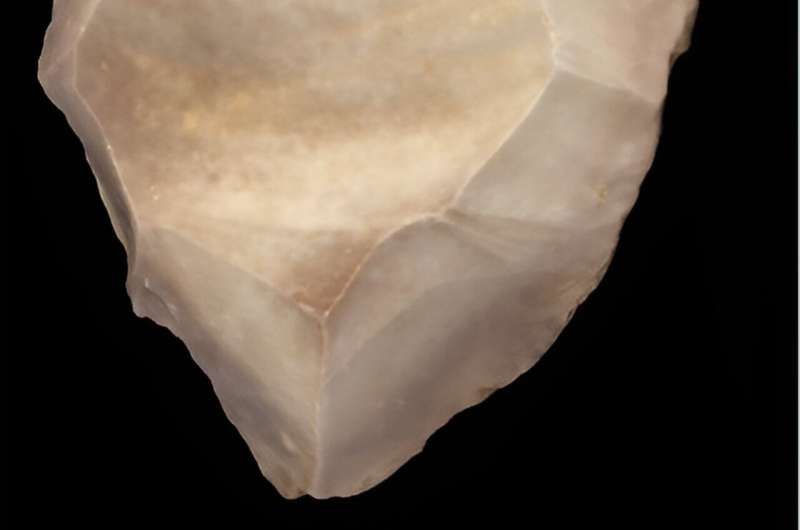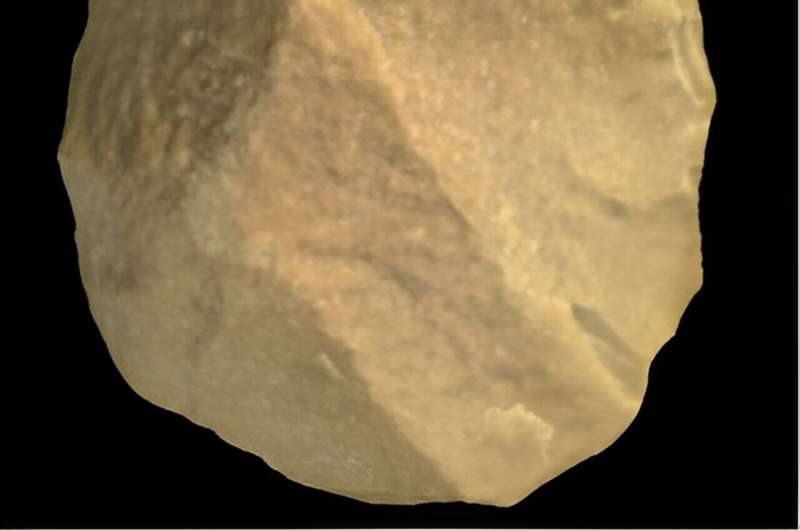This article has been reviewed according to Science X's editorial process and policies. Editors have highlighted the following attributes while ensuring the content's credibility:
fact-checked
peer-reviewed publication
trusted source
proofread
Origins of cumulative culture in human evolution—researchers identify contributions to today's culture and technology

Each of us individually is the accumulated product of thousands of generations that have come before us in an unbroken line. Our culture and technology today are also the result of thousands of years of accumulated and remixed cultural knowledge.
But when did our earliest ancestors begin to make connections and start to build on the knowledge of others, setting us apart from other primates? Cumulative culture—the accumulation of technological modifications and improvements over generations—allowed humans to adapt to a diversity of environments and challenges. But, it is unclear when cumulative culture first developed during hominin evolution.
A study published this week in the Proceedings of the National Academy of Sciences by Arizona State University researcher Charles Perreault and doctoral graduate Jonathan Paige, concludes that humans began to rapidly accumulate technological knowledge through social learning around 600,000 years ago.
"Our species, Homo sapiens," said Perreault, "has been successful at adapting to ecological conditions—from tropical forests to arctic tundra—that require different kinds of problems to be solved. Cumulative culture is key because it allows human populations to build on and recombine the solutions of prior generations and to develop new complex solutions to problems very quickly.
"The result is, our cultures, from technological problems and solutions to how we organize our institutions, are too complex for individuals to invent on their own." Perreault is a research scientist with the Institute of Human Origins and associate professor with the School of Human Evolution and Social Change.

To investigate when this technological turn may have begun, Paige and Perreault analyzed changes in the complexity of stone tool manufacturing techniques across the last 3.3 million years of the archaeological record to explore the origin of cumulative culture.
As a baseline for the complexity of stone tool technologies achievable without cumulative culture, the researchers analyzed technologies used by nonhuman primates—like chimpanzees—and stone tool manufacturing experiments involving inexperienced human flintknappers and randomized flaking.
The researchers broke down the complexity of the stone tool technologies by the number of steps (PUs or procedural units) that each tool-making sequence involved. The results suggested that from around 3.3 to 1.8 million years ago—when australopiths and the earliest Homo species were around—stone tool manufacturing sequences remained within the range of the baselines (1 to 6 PUs).
From around 1.8 million to 600,000 years ago, manufacturing sequences began to overlap with and slightly exceed the complexity baseline (4 to 7 PUs). But, after around 600,000 years ago, the complexity of manufacturing sequences rapidly increased (5 to 18 PUs).
"By 600,000 years ago or so, hominin populations started relying on unusually complex technologies, and we only see rapid increases in complexity after that time as well. Both of those findings match what we expect to see among hominins who rely on cumulative culture," said Paige, a postdoctoral researcher at the University of Missouri and ASU Ph.D. graduate.

Tool-assisted foraging may have been the impetus for the earliest beginning of the evolution of cumulative culture. Early hominins, 3.4 to 2 million years ago, likely relied on foraging strategies that require tools, like accessing meat, marrow and organs, leading to changes in brain size, life span and biology that set the stage for cumulative culture.
While other forms of social learning may have influenced tool making, it is only in the Middle Pleistocene when there is evidence for rapid increases in technological complexity and the development of other kinds of new technologies.
The Middle Pleistocene also shows consistent evidence of controlled use of fire, hearths and domestic spaces, likely essential components of the development of cumulative culture. Other kinds of complex technologies also developed in the Middle Pleistocene, including wooden structures constructed with logs hewn using hafted tools, which are stone blades affixed to wooden or bone handles.
This all suggests that cumulative culture arose near the beginning of the Middle Pleistocene epoch, possibly predating the divergence of Neanderthals and modern humans.
More information: Paige, Jonathan, 3.3 million years of stone tool complexity suggests that cumulative culture began during the Middle Pleistocene, Proceedings of the National Academy of Sciences (2024). DOI: 10.1073/pnas.2319175121. doi.org/10.1073/pnas.2319175121
Journal information: Proceedings of the National Academy of Sciences
Provided by Arizona State University





















